
Tiger Salamander
Often sold as a pet, this eastern tiger salamander is endemic to North America and grows as long as 37 cm in length. Along with baby mice and small frog, they also consume small worms and insects. The larvae of Ambystoma tigrinum are entirely aquatic and the adults are fully adapted to the terrestrial environment but, at the same time, they are also very good swimmers. Here follows a brief wild amphibians list which will be very useful o increase your general knowledge.

Mexican Salamander
Another species of the genus Ambystoma, it is also known as axolotl which literally means "water monster". An important thing about these wild amphibians is that the larvae are unable to undergo metamorphosis and the adults remain gilled and aquatic throughout their life. As the very name suggests, their natural habitat consists of lakes in the Mexico City and because of their capability to regenerate limbs, they are extensively used in research. The water monster has now become critically endangered as declared by the IUCN.

Western Chorus Frog
Measuring just 4 cm in length, they are endemic to the United States and Canada and are alternatively known as midland and striped chorus frogs. Owing to their specific behavior of calling in large choruses (both females and males), particularly on the warm summer nights, the word "chorus" has become a part of their name. Pseudacris triseriata are sexually dimorphic as the males are not only smaller than the females, but they also have a distinctive feature of yellow vocal sacs which become visible when they are calling.

Wood Frog
Widely distributed across North American continent, they grow as large as 7 cm and exhibit sexual dimorphism as the female members of the species are larger than their male counterparts. The national importance of Rana sylvatica is obvious from the fact that it is a state amphibian of New York. Owing to its great degree of terrestrial adaptation, long range movements, surprising habitat associations and, especially, freeze tolerance, it has been a piece of great attraction for the biologists throughout the 20th century.

Western Toad
Native to the western part of North America, this species of the wild amphibians list is a relatively large toad species and measures up to 13 cm in body length. During the breeding season between March and July, nearly 70,000 eggs are laid by Bufo boreas that get stuck together in the form of strings. The western toads can eat any kind of insect which they catch, while they fall prey to a number of other larger animals including mammals, birds, amphibians and reptiles.

Green Toad
Being a small toad it grows up to just 5 cm in body length and derives its name from the green color of its upper skin, while the underside is cream colored. Native to the Southwestern United States, Bufo debilis prefer dry or semi-arid habitat and can easily be seen during and after the periods of rainfall. Their long breeding season extends throughout the months of autumn, summer and spring.

Great Plains Toad
Endemic to Mexico and the United States, this relatively large species of toad grows up to the length of 11 centimeters. The favorite diet of Bufo cognatus consists of different species of caterpillars or cutworms, while it is itself preyed by the plains garter snake. Preferring grassland and watery habitat, the Great Plains toad can be seen active throughout the day when there is abundant rain or permanent water bodies around.

Northern Leopard Frog
For being the state amphibian of Vermont and Minnesota, it has got great national importance and is native the United States and Canada. As you can see in the wild amphibians pictures, northern leopard frog measure 11 cm in body size and is grouped among the fairly large species of frogs. With the greenish brown dorsal color, there are found large, dark, and circular spots on the legs, sides and back. Found throughout the urban, open and forested areas, Lithobates pipiens prefers to live in slow-moving streams, marshes, swamps and permanent ponds.

American Bullfrog
A species of the family of 'true frogs', it is endemic to the United States and Canada and is simply known as bullfrog. Rana catesbeiana prefers to live along the edges of ponds, swamps, lakes and other permanent water bodies. The amphibian has been named ‘bullfrog’ because of the call of male in the breeding season that is reminiscent of the roar of a bull. In exceptional cases, it may grow up to the size of 20 cm with 800 grams of body mass.

Asian Common Toad
Endemic to South and Southeast Asia, this fairly large species of toad grows up to the size of 20 cm and is alternatively known as 'common Indian toad', 'Javanese toad', and 'black-spectacled toad', etc. After the breeding season of monsoon, they can be seen in large number, and their black-colored larvae can usually be seen in the still or slow-moving water bodies.

Himalayan Toad
As the very name suggests, this true toad species is widely distributed throughout Himalayan Mountains, where the fully grown adults may attain the size of up to 13 cm.

Indus Valley Toad
Particularly common in Indus Valley, its habitat range extends from the low plains to the height of 800 meters, and it is widespread across many countries of Asia including India, Pakistan, Iran, Nepal and Afghanistan.

Hazara Torrent Frog
Widespread in Hazara region of Pakistan, Paa Hazarensis (scientific name) is also found in India, and some other countries, such as Nepal and Bhutan.

Murree Hills Frog
Threatened by the habitat loss, Paa vicina is found in India and Pakistan where its natural habitat consists of moist forests, rivers, springs, and high-altitude grasslands.

Indian Burrowing Frog
Measuring about 4 cm (from snout to vent), this South Asian species of frog lives is certain parts of India and Pakistan and can survive up to the height of 7,000 feet in Himalayas.

Plains Spadefoot
Endemic to Mexico, Canada and Great Plains of the United States, this species of spadefoot toads grows up to 6.5 cm in maximum length.

Great Basin Spadefoot
Native to the North American continent, this species of toad is colored brown, olive or grey and measures over 6 cm in body length.

Canyon Tree Frog
This nocturnal and carnivorous species of tree frog is endemic to various states of the US and grows as large as 6 cm in size.

Couch's Spadefrog
Growing up to 9 cm in length, this North American spadefoot toad is named after an American naturalist Darius Nash Couch who was the first to collect its specimen.

New Mexico Spadefoot
A close relative of Couch's spadefoot, this creature inhabits the US and Mexico and grows up 6.5 cm in size.
Latest Fish
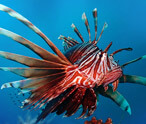
Lionfish Facts
Lionfish is a chordate which belongs to the family...read more
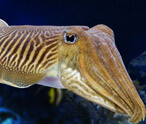
Cuttlefish Facts
Cuttlefish is a mollusk which belongs to the class...read more

Octopus Facts
Do you know how, in the floor of an ocean, an octopus...read more

Sea Urchin Facts
Sea urchins are tiny water creatures found in oceans...read more
Latest Birds
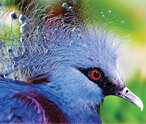
Victoria Crowned Pigeon
With its name...read more
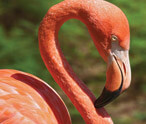
Information About Flamingos
Flamingos are...read more
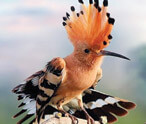
Hoopoe Bird
Famous for its distinctive crown of...read more
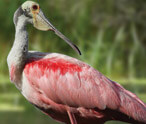
Roseate Spoonbill
The beautiful Roseate Spoonbill...read more


















Largest Birds of Prey in the World by Size and Weight
Also called raptors, the birds...
List of Birds That Fly in V Formation
Did you ever feast your eyes on the amazing phenomenon...
Birds of Prey List
A bird of prey is also known as a raptor or a hunter. It belongs to the group of...
Millipedes Vs Centipedes
Centipedes and millipedes are both arthropods from the group...
Difference Between Warm Blooded and Cold Blooded Animals
Every living organism...
Top 10 Extremely Dangerous Insects
The insects have been grouped in class 'insecta' of...
Sheep Vs Goat
The goat and the sheep are related to each other through the same family. They...
Animals with Blue-colored Blood
Humans and other vertebrates have red-colored blood running...
Birds, Mammals And Reptiles
Before coming to the question of common ancestry of birds...